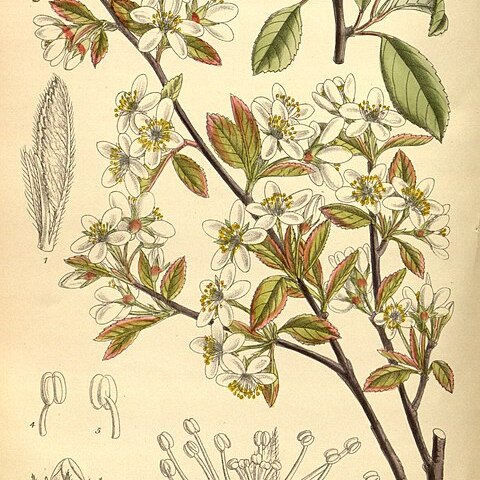Shrub to 2 m, often in clumps; lvs imbricate in bud, short-petiolate, oblong-elliptic or somewhat obovate, often mucronate, tapering to the base, sharply serrate, glabrous, ± coppery when young but less so than in no. 9 [Amelanchier laevis Wiegand]; petiole 3–10(–15) mm; fls solitary or more often 2–4(5) together on glabrous pedicels 1–3 cm, 1 terminal, the others from adjacent lf-axils; sep triangular-acuminate, ascending or spreading, persistently tomentose on the upper side; pet elliptic, 6–10 mm, often more than half as wide; ovary densely tomentose at the summit, tapering into the styles; fr dark purple, 1 cm, longer than thick, often some of the seeds abortive; sexual. Moist woods, swamps, and streambanks; Lab. to James Bay and Man., s. to N. Engl., n. Mich., and n. Minn., and at higher altitudes in the mts. to Pa. and W.Va. May–Aug.
A shrub to 3 m high. The leaves are oval and 2.5-5 cm long. They are usually tapered at both ends. The leaves have fine teeth along the edge. The flowers occur in clusters of 1-3 in the axils of leaves. Fruit are oval or pear shaped and 15 mm long. They are dry and sweet.


